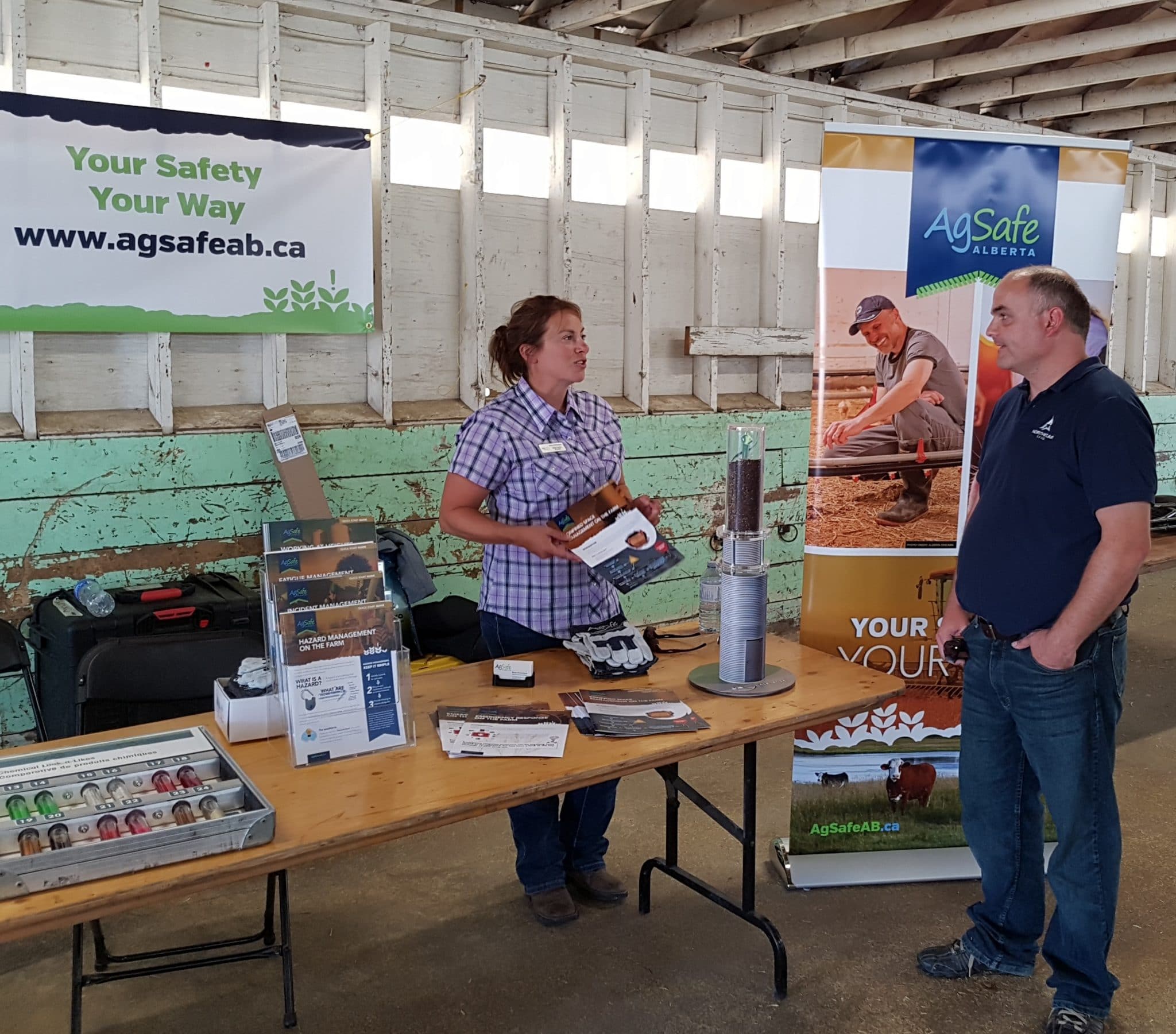Since Alberta’s Bill 6, The Enhanced Protection for Farm and Ranch Workers Act, came into effect on Jan. 1, 2016, one organization — AgSafe Alberta Society — has been working diligently to develop and deliver farm safety management tools, resources and programs for farmers and ranchers.
According to Jody Wacowich, the overall goal of AgSafe Alberta is to empower farmers and ranchers to integrate practical safety management programs into their everyday operations, in order to prevent illness and injury for everyone involved on the farm.
“Currently in agriculture we lose an average of 18 people per year in Alberta to fatalities,” she said. “There aren’t any other industries that have numbers that high. We’d like to see everybody get home safely at the end of the day.”
Prior to the Enhanced Protection for Farm and Ranch Workers Act, Alberta was the only province without comprehensive health and safety laws for farm and ranch workers.
AgSafe Alberta develops programming and additional resources to help farmers and ranchers implement the rules. According to Wacowich, AgSafe works with commodity groups, agriculture societies and agriculture service boards to assist them in getting the ag safety message out to farms and ranches across the province.
“We currently have three advisors who do a number of things — they can visit a farm and go over a hazard assessment, they can help design a safety plan, and they can put on workshops, anything from an introductory informational workshop to a couple of hours of focusing on a specific part of safety, such as hazard assessment,” she notes.
On Dec. 1, 2018, technical rules for workplace health and safety, developed in collaboration with farmers and ranchers, and with the consensus of the AgCoalition, went into effect on Alberta farms and ranches, including some provisions unique to the agriculture sector.
It’s important to note that Bill 6 affects only Alberta farm and ranch producers with waged workers who are not the owner or related to the owner. This means family members can still participate in farming operations as they always have, and neighbours can still volunteer to help each other out.
Wacowichsays farms without employees can still learn a lot by attending a safety workshop and/or having an AgSafe advisor visit the farm. “I think even for family farms that don’t have employees, it’s a great place to have a conversation. How are ‘we as a family going to mitigate accidents?’ And, ‘these are the steps everybody will take when we go to do something so that we make sure nobody gets hurt.’”
Even once all family members are clear on the safety “rules” of the farm, the same can’t be said for visitors. Wacowich says part of the conversation is knowing how to communicate farm safety rules to anyone who visits, especially when it involves children.
“So, we’re going to say the lagoon is off limits, we don’t want anybody around there. Your kids know that, but one day your kids have friends over and they say, ‘hey, this is a great big place to roam around, let’s play Mantracker,’” says Wacowich. “Now, who tells these guests what the rules are? It’s a great opportunity to have some conversations about how to handle things like that on the farm.”
Wacowich admits there is still some learning to do, but people are having more conversations and are more open than they were a few years ago.
“This is partly because the legislation came in and the farms with employees had to look at putting those pieces in place,” she says. “The media, too, has helped in the sense that they’ve reported on more information about incidents on the farm that are happening … we’re hearing more about it and people are thinking a little bit more about it.”
AgSafe Alberta recently received funding from Alberta Labour to assist in building resources to continue their programming work. Some of this work includes an online training portal which may include WHMIS training tools, orientation pieces, tractor safety materials, etc.
Future work includes integrating follow-up with farmers and ranchers. So, circling back to those who’ve taken some AgSafe Alberta training and revisiting to determine if more training and/or explanations are needed. And to provide reminders to family farms and ranches that safety is a number one priority.
To assist farmers and ranchers, the Alberta government launched a grant program in October 2018 to help producers with the cost of improving safety on their farms. The program provides up to $10,000 per recipient to help Alberta farmers and ranchers with waged non-family workers implement health and safety practices and procedures that make their work sites safe for their workers, their families and themselves.
The grant covers up to 50 per cent of eligible safety expenses to a maximum of $5,000 per year or $10,000 over the life of the program per eligible applicant. Expenses going back to Jan. 1, 2018, are eligible under the program.
Eligible expenses (with receipts) include things such as first-aid kits, fire extinguishers and warning signage; respirators, eye and hearing protection; health and safety programs, courses, education and training; and seatbelt installation, warning lights and auger guards to improve equipment safety.
The program runs until March 2021.





